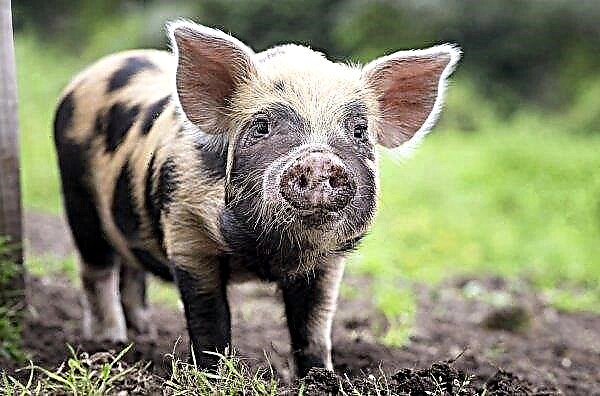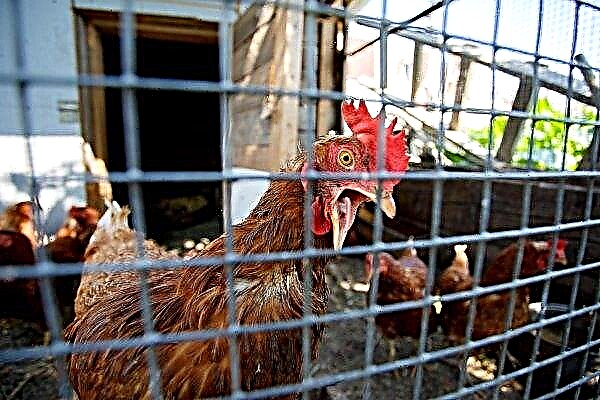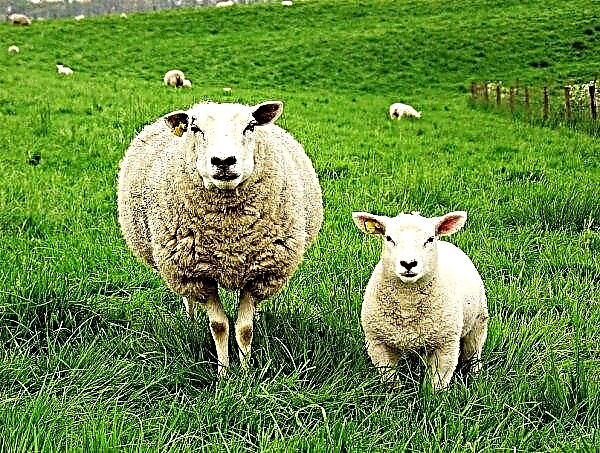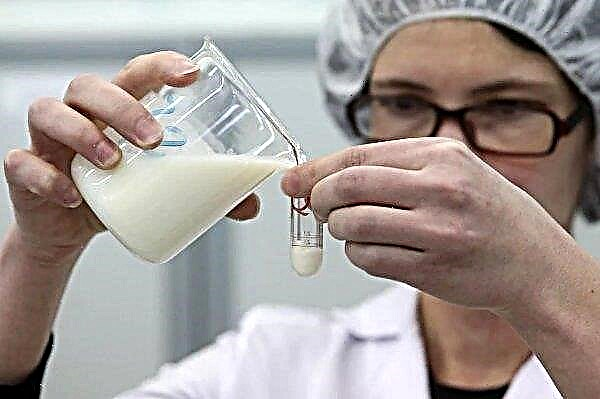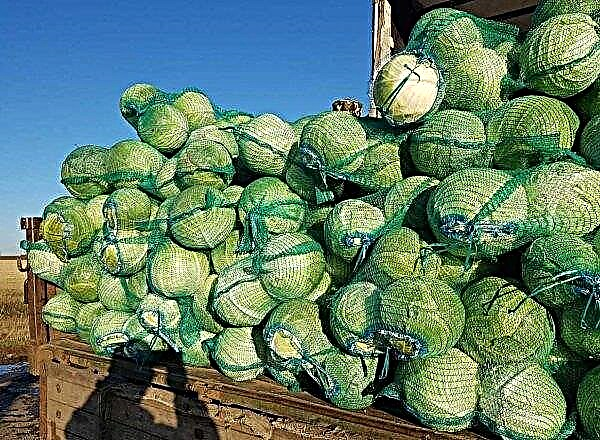Growing champignons at home is possible and affordable. However, the premises of the apartment or your house will not work, because there is no way to observe the necessary microclimatic conditions for planting mushrooms. Home conditions for the cultivation of plants imply the presence of cellars, basements or similar rooms where you can maintain a stable regime of humidity, temperature, lighting and ventilation. Well suited for planting mycelium in prepared soil in a personal plot.
Why grow champignons
The home-made method of propagating champignons brings a lot of pleasure and benefits to an avid summer resident.
To plant a plant is beneficial for several reasons:
- the mushroom can be cultivated year round;
- he brings extra income;
- a chance to always have a fresh and ecological delicacy on the table, rich in nutrients;
- the opportunity to save money on the purchase of mushrooms.

In addition, the process is fascinating and simple and can become a useful hobby for the soul, bring a good additional income. Today, even a beginner will be able to master simple technology from scratch. Step-by-step instructions are available almost everywhere. When buying mycelium on the package, a fairly simple way of breeding for beginners is described. The fungus grows in a substrate, which is prepared in a special way. Special soil is best placed on shelves or in wooden mushrooms, which are easy to make yourself.
Did you know? In 1707, the botanist Tournefort from France first described a method for cultivating champignons on old horse manure.
The choice of premises and whether it is possible to grow in an apartment
In small volumes, the mycelium can be grown on the windowsill in the apartment or on the balcony. For a large yield, you need to choose another place. Cellars, greenhouses, cellars, vegetable stores, etc. are well suited.
Choose a room by the following criteria:
- there are thick walls with thermal insulation;
- good ventilation should be provided (supply and exhaust system, especially for underground type of cultivation);
- ceiling height from 3 to 5 m;
- the presence of a sewer system and the supply of clean water;
- there is a source of natural light and is additionally equipped with artificial lighting (greenhouse lamps DRL or daylight type);
- equipped with winter heating;
- temperature is maintained from + 18 ° С to + 22 ° С;
- good air humidity;
- Lighting should allow the creation of diffused light and complete darkness and prevent direct sunlight from entering the crop.

It is advisable to grow mycelium in cellars with good humidity, as they like moisture. To exclude the appearance of mold and fungus on the walls, they should be treated with a solution of copper sulfate and lime. Disinfection is necessary to protect the future crop from various types of parasites and diseases.
Temperature and humidity
Monitoring these two important indicators is necessary with the help of thermometers and hygrometers. When planting and phased cultivation of mushroom beds, these measuring instruments are completely indispensable.
Important! High-yielding, unpretentious and easy-to-care varieties are best suited for indoor cultivation.
The culture is thermophilic, the desired temperature regime, in which a full-fledged mushroom can grow, ranges from +16 ... + 27 ° С. In summer, it is easy to adjust with ventilation. Also, the room needs to be selected insulated and heat-resistant. It’s good to equip the room with adjustable heating systems. Electric heaters are not suitable. Because of them, the air dries up and the growth of fruiting bodies slows down. Humidity in the room must be maintained within 70–95%.
It is recommended to thoroughly irrigate the land with garden sprayers to prevent it from drying out and to maintain soil moisture. You can reduce the rate due to ventilation.
Did you know? Swede Lundberg in 1754 described the buildings in which it became possible to cultivate champignons all year round. However, the technology was expensive then, and the mushroom was considered a delicacy.
Ventilation
The mycelium begins to grow only when there is an influx of fresh air, so the cultivation method involves the systematic ventilation of the room. The best option is to install ventilation and air conditioning systems.
If compost is used as a substrate, during decomposition it actively releases carbon dioxide, which must be removed from the room. But at the same time, drafts should not be allowed. Additional filters to clean the air will improve its circulation in the cellar.
Substrate Preparation
To begin the production of soil should be with the selection of components for future compost. The best is considered a mixture of straw with horse manure, which is supplemented with superphosphate, ammonium nitrate, urea and necessarily gypsum. It is desirable that the animal does not eat green food, and ate mainly straw.
Step by step compost preparation is as follows:
- Wheat or rye straw is soaked in a container of warm water. So it should stand for a day.
- After that, the straw is transferred to a pile and laid in layers, alternating with manure, and each of them is irrigated with warm water (maximum 6–8 pcs.).
- After 3-4 days, the compost is thoroughly mixed and supplemented with superphosphate and urea. The mixture begins to exude a smell of ammonia.
- After 3-4 days, re-mixing and the addition of ammonium nitrate are performed.
- So, in stages, compost must be shoveled another 4–5 times, and other mineral components are added in turn.
- During the last mixing, gypsum is mixed.

For 1 ton of manure with straw you will need:
- superphosphate - 5 kg;
- urea - 3 kg;
- gypsum - 4 kg.
Important! On 3–5th day after falling asleep of the integumentary substrate, the room needs to be lowered to +12 ... + 17 ° C.
On average, compost is prepared in 24–28 days. The fermentation process ends when the smell of ammonia disappears. Manure acquires a light brown hue, a loose texture, when squeezed gently springy and does not stick to the hands. During fermentation, the temperature of the compost can increase to +50 ... + 70 ° C. It is possible to plant mycelium in the prepared substrate when its temperature does not exceed + 25 ° С.
Preparation of the substrate should be carried out in various special, well-ventilated rooms for household purposes or under a canopy on the street so that rain water and direct sunlight will not get into it. So insect pests are not allowed to get into compost. If it is not possible to make the substrate yourself, it can be purchased at the store.
Did you know? In the USA, champignons first came in 1865, and the mushroom industry began to develop in 1870.
How and what to plant
The home method for cultivating champignons uses earthen floors, shelving and wooden boxes. They are placed one above the other, which significantly increases the landing area. It is necessary to carefully care for the crop after planting mycelium in the soil.
The landing technique for beginners is as follows:
- Before disembarking, compost can be subjected to special heat treatment using heating lamps of a certain type. Since at the time of sowing, its temperature should not fall below + 27 ° C, this value is most optimal for the full interaction of spores with soil.
- Heated compost is laid out in a layer of 23-30 cm in beds or in boxes, while being rammed.
- Wells are formed for landing with a depth of 5 cm in a checkerboard pattern. The distance between the cells is 25 cm.
- A sterile compost mycelium is dipped into each well with a ball the size of a tennis ball. The cereal type of mycelium can be distributed over the surface of the soil and prune with a thin layer of substrate.
- After the growth of the mycelium (after about 1–2 weeks), a layer of 3-4 cm of cover soil should be scattered over the surface of the substrate.
Video: Growing champignons
Care Features
The main measures for the care of champignon beds are to maintain a balanced indoor microclimate during the fruiting period, namely:
- To regulate the temperature regime not more than +15 ... + 17 ° С, to control so that the compost does not dry out (at + 20 ° С the mushrooms stop development).
- Humidity should be maintained at least 65–95%, for this the beds are covered with burlap or newspapers. They are regularly wetted with water, but water is not allowed to enter the soil.
- During irrigation, it is better to use a nozzle with a spray and to prevent water from entering the compost, and irrigate only the sprinkled soil.
- Ventilate the room regularly, especially after the first harvest, lack of fresh air leads to the formation of a white crust (stroma) on the mycelium. It must be cleaned.
- As the mycelium grows, they add a new substrate and make fertilizer - dry peat mixture and chalk (9: 1). A week later, the temperature in the room is reduced to +13 ... + 15 ° C. Moisturize the soil, but do not allow the penetration of water into the main layer of the substrate.
- In the absence of windows in the cellar, lighting is provided with fluorescent lamps for 5-6 hours, no more.

If the size of the room allows, the space should be zoned into two parts - for incubation and direct mushroom field. When creating a stable microclimate, crops can be harvested year-round.
Important! When the fruiting period ends, the mycelium is disposed of. They serve as a recharge for future generations. Repeated use of the substrate is unacceptable.
Diseases of champignons and soil, methods of control
There are different types of diseases of champignons of various origins:
- Mushroom. Common among them are wet rot, which provokes deformation of the fruiting body, and cobwebby mold. The latter causes rotting and stains the mushrooms in a brown color.
- Bacterial. The most typical of them are rusty and brown spotting, mummification. Affected products lose their presentation. Mummification is considered bacteriosis, which leads to the formation of abnormal fruiting bodies with curved legs of gray-yellow color. Dangerous high growth rate - 30 cm / 1 day.
- Viral. Diagnosed by special methods. They lead to slow growth of the mycelium, the development of abnormal fruiting bodies and delayed fruit formation.

In addition, competitive mold may appear in the substrate, which occurs when using poor-quality starting material, disruption of the compost preparation and pasteurization technology, at the time of adding additives.
Mushrooms can also be affected by pests such as mushroom mosquitoes, ticks, parasitic and saprophytic nematodes. Moreover, there are noncommunicable diseases: stroma, mass dying off of fetal body embryos, “cockscomb”, development of fruiting bodies with long thin legs and small caps.
Prevention and treatment are provided by the following methods of combating fungal diseases:
- Destruction of sources and methods of the spread of diseases by sanitary-hygienic measures.
- Strict adherence to the modes of the technological process at all stages of cultivation.
- Pasteurization of the substrate.
- Biotechnical measures - catching imago of mushroom mosquitoes and flies using various traps.
- The use of insecticides.
- The biological method is the use of microbiological preparations.
Did you know? The first to put sterilized compost with mycelium in a pure culture of mushrooms in the bottles and the Americans began to sell them.
Correct recognition and timely measures taken can save the crop from death and help protect plants and substrate from harmful insects and diseases.
Collection and storage
3-4 months pass from sowing to ripening. You can start collecting when the mushroom reaches medium size and the membrane between the cap and the leg has not yet burst. Overripe mushrooms are harvested only for seed, as they lose useful properties and nutritional qualities. Fruit bodies with a dark, brown hat are not allowed to be collected at all, as they can cause intoxication and provoke food poisoning.
The fungus is twisted from the substrate, and the hole is covered with soil. Active fruiting is 8-14 weeks, which is accompanied by yield waves of up to 7 pcs. The duration of the resting stage between them is 4-7 days. With 1 sq. 5-12 kg of crop are harvested, up to 70% of which falls on the first 2-3 waves. Store the product unwashed in a cool place.
Shelf life in the refrigerator:
- 2-3 days - in open form;
- 6-7 days - in a paper bag at a temperature of +1 ... + 3 ° C;
- up to 6 months - in the freezer.

Also, champignons may be frozen in boiled form, after boiling them for 10 minutes. without salt. As you can see, growing champignons is quite affordable for beginners. The process is not particularly difficult and does not require significant costs. If you follow the technology correctly, you can get a quality crop and delight yourself with delicious mushroom dishes all year round.



